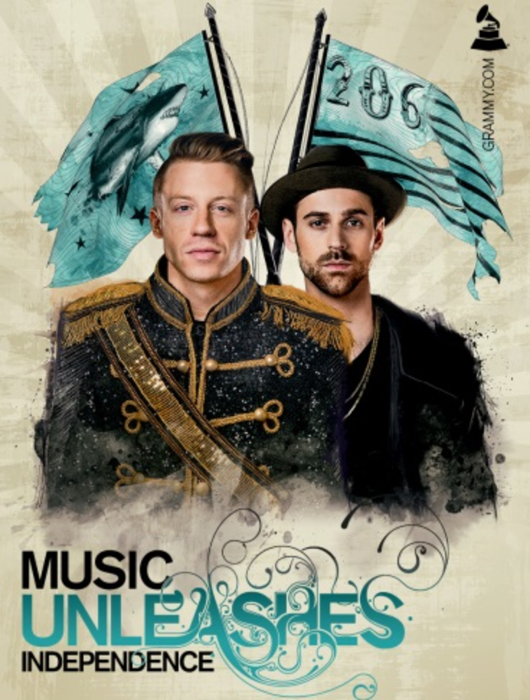You’re cleaning your apartment or you’re driving to work. Nothing too exciting. Then a song comes on the radio. It’s your favorite song. Or it’s just a snappy tune. Doesn’t matter. Suddenly, you’re dancing around the living room using the broom handle as a microphone or tapping your feet—somewhat dangerously—on the gas pedal in time to the tune.
Music just does that to people. It happened to this guy.
It’s also the idea behind the multichannel “Music Unleashes Us” campaign for the 56th annual Grammy Awards, which went down last night in Los Angeles. Developed by TBWAChiatDay and production company Tool, the campaign’s CTA goes something like this: Dance like nobody’s watching. Dance like everybody’s watching. Just dance.
“Music Unleashes us” features a cocktail mix of print and out-of-home, social media, TV ads, digital activations, and video content, including these gems:
But one of the coolest elements by far is a video of Macklemore & Ryan Lewis taking over a New York City bus for an impromptu rendition of “Can’t Hold Us” (see the video at the very top of the page). It’s a fun video just on the surface, but there’s also a little secret lurking within. For eight hours yesterday (between noon and 8 p.m. on 1/26), the video was available via a special player on wonderwall.msn.com, where it was actually “backmasked”—as in, when you played it backwards, hidden footage was revealed, just like the cryptic messages the Beatles and Led Zeppelin snuck onto their albums in the mid-1960s, but with a twist.
With a record, all you have to worry about is the audio. With a video, every second of the choreography, space, and overall narrative has to be spot-on and strategically arranged for the thing to work.
“Nowadays, more and more people are experiencing music via digital videos, so we thought it would be fun to bring the technique back using modern technology,” says Bob Rayburn, creative director at TBWAChiatDay. “Once the video finishes playing, the viewer is prompted to click on a special vinyl button to ‘unleash’ a new story; [then] the scrubber bar begins to move backwards and the new video plays.”
Backmasking aside, filming the video itself—without leaking anything before its release—was a feat of organization. The bus was specially rigged with 12 hidden cameras and a troop of extras were hired to serve as the “passengers.” But they weren’t told any specifics about the project (just that they were being taken to a secret film shoot), so their on-camera reactions are genuine.
“We also had to carefully plan Macklemore and Ryan Lewis’s entrance; we asked them to arrive at the shoot wearing hoodies to conceal their faces, and without any members of their entourage,” says Tool Director Geordie Stephens. “After the shoot—which only took about 20 minutes or so—we had everyone sign nondisclosure agreements and carefully explained the importance of keeping the project off social media.”
Until it was time to keep the project on social media, of course. YouTube views of the video were at three million after a week. The stunt also garnered quite a lot of media and major network coverage.
TBWAChiatDay Creative Director Rick Utzinger attributes the high engagement levels to the simplicity of the universal “human truth” behind the campaign. “We focused on the undeniable fact that we are powerless against music,” he says. “It will tap our toes and shake our hips for us, whether we want to or not.”
It’s also not always about a having a big celebrity star in your video.
“I would encourage marketers to focus on coming up with a simple, relatable idea, and to execute it in a simple, entertaining way,” Stephens says. “Of course it helps to have someone like Macklemore show up—but often the best commercial work I’ve done has involved no celebrity talent at all.”








